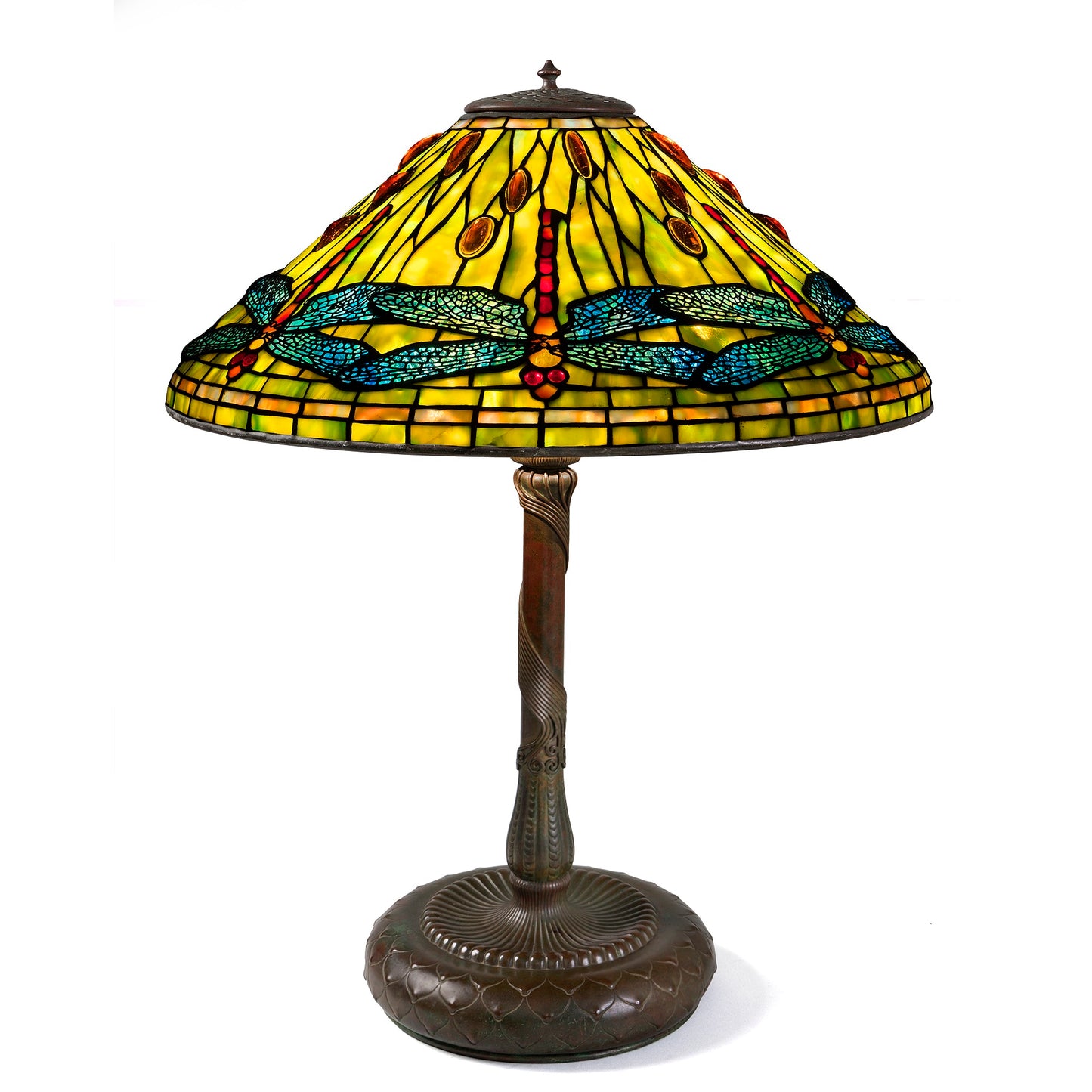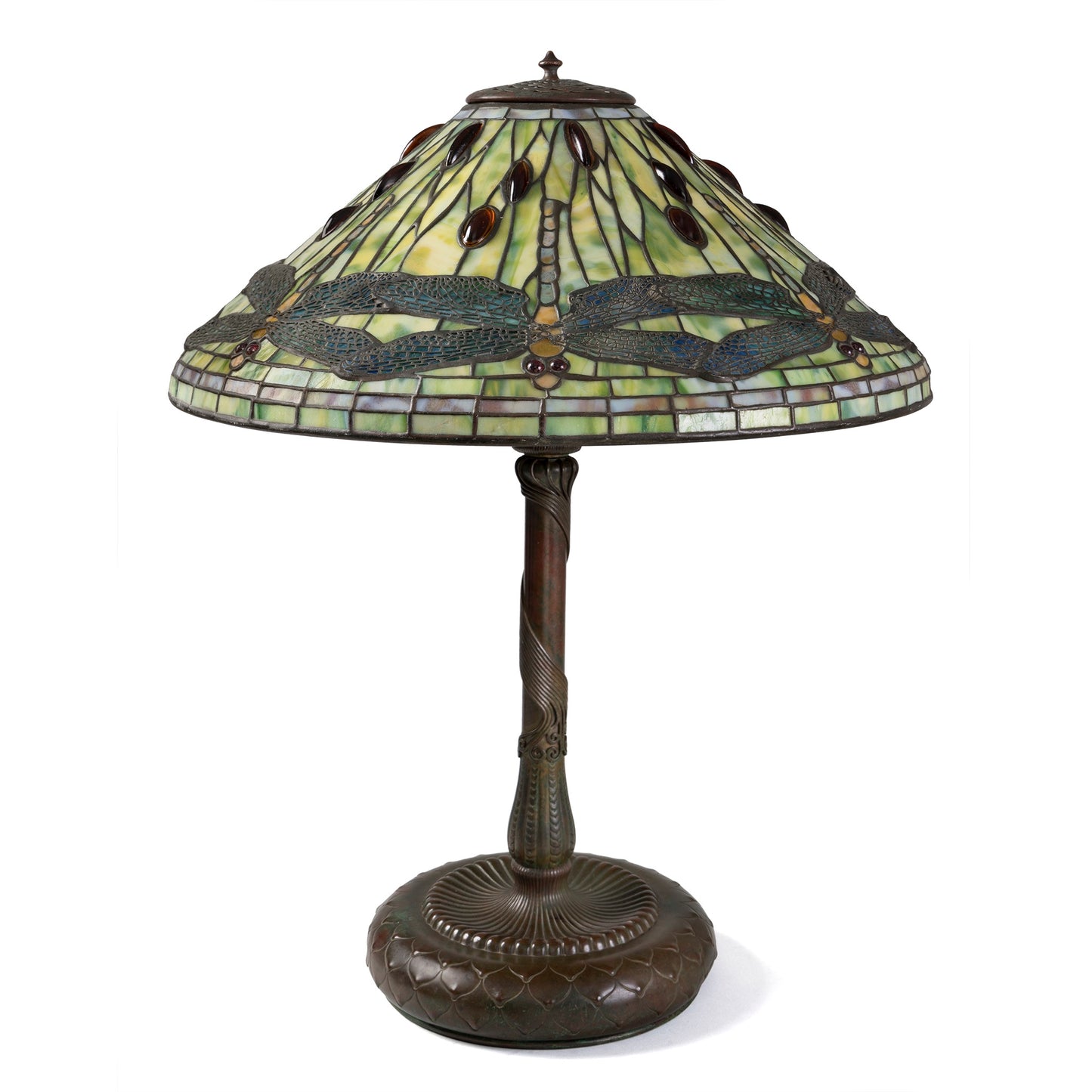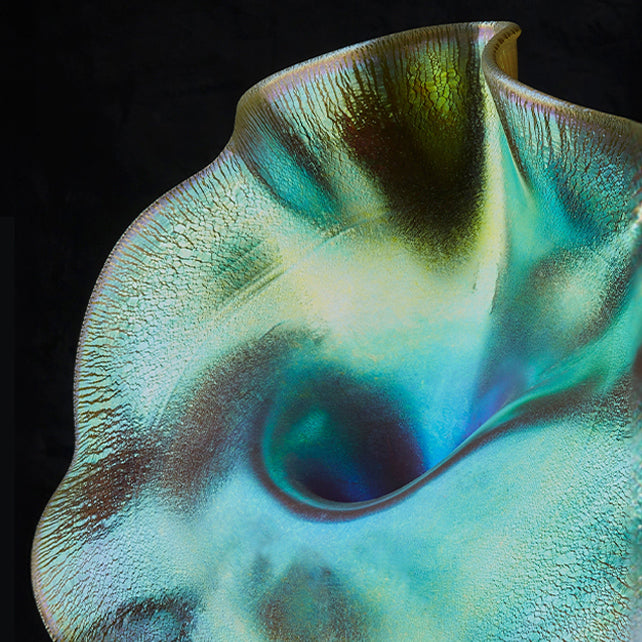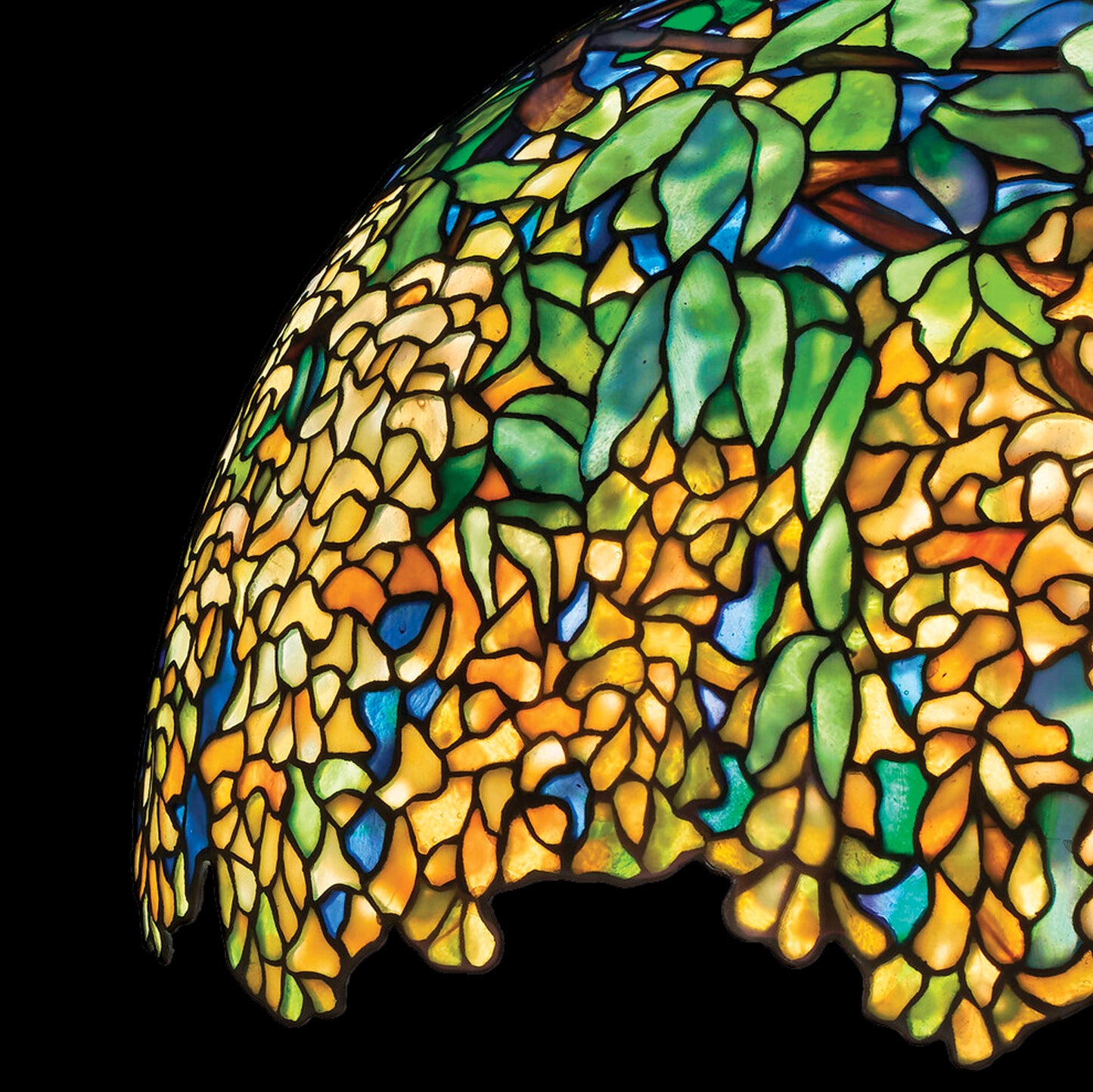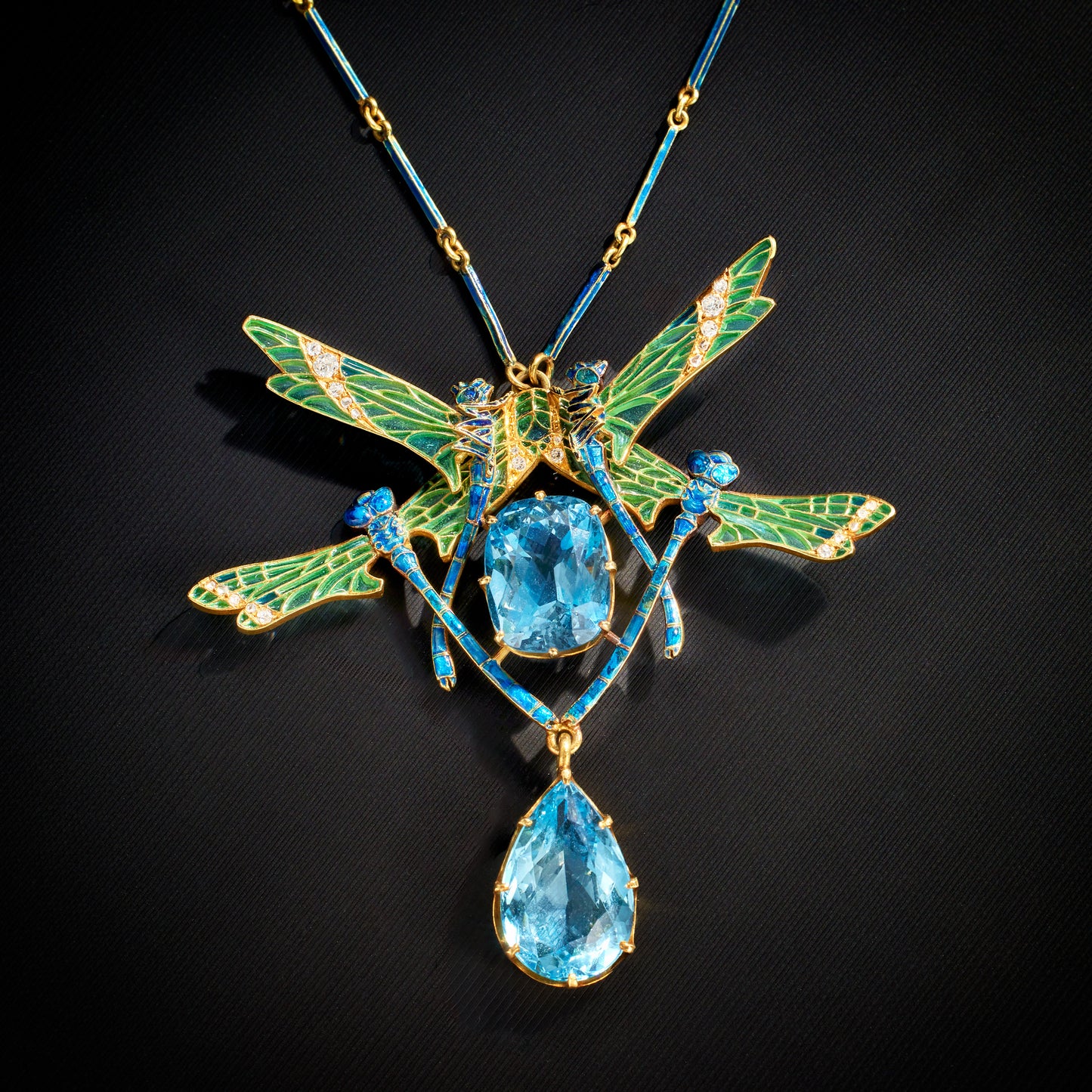Tiffany Studios New York “Dragonfly” Table Lamp
Item #: L-21584
Artist: Tiffany Studios New York
Country: United States
Circa: 1905-1913
Dimensions: 20" diameter, 25.75" height
Materials: Leaded Glass, Bronze
Shade Signed: Tiffany Studios New York 1495
Base Signed: Tiffany Studios New York D803 with Tiffany Glass and Decorating Company monogram
Literature: Dr. Egon Neustadt, The Lamps of Tiffany, New York, 1970, pp. 102-105 (for the shade)
Alastair Duncan, Louis C. Tiffany: The Garden Museum Collection, Woodbridge, Suffolk, 2004, p. 17 (for an in situ photograph of the shade)
David A. Hanks, Louis Comfort Tiffany, Treasures from the Driehaus Collection, New York, 2013, pp. 52-55 (for the shade)
Alastair Duncan, Tiffany Lamps and Metalware, Woodbridge, Suffolk, 2019, pp. 106, no. 413 and 172, no. 696 (for the shade); pp. 86, no. 326-327 (for the base)
Item #: L-21584
Artist: Tiffany Studios New York
Country: United States
Circa: 1905-1913
Dimensions: 20" diameter, 25.75" height
Materials: Leaded Glass, Bronze
Shade Signed: Tiffany Studios New York 1495
Base Signed: Tiffany Studios New York D803 with Tiffany Glass and Decorating Company monogram
Literature: Dr. Egon Neustadt, The Lamps of Tiffany, New York, 1970, pp. 102-105 (for the shade)
Alastair Duncan, Louis C. Tiffany: The Garden Museum Collection, Woodbridge, Suffolk, 2004, p. 17 (for an in situ photograph of the shade)
David A. Hanks, Louis Comfort Tiffany, Treasures from the Driehaus Collection, New York, 2013, pp. 52-55 (for the shade)
Alastair Duncan, Tiffany Lamps and Metalware, Woodbridge, Suffolk, 2019, pp. 106, no. 413 and 172, no. 696 (for the shade); pp. 86, no. 326-327 (for the base)












